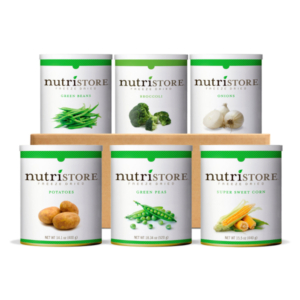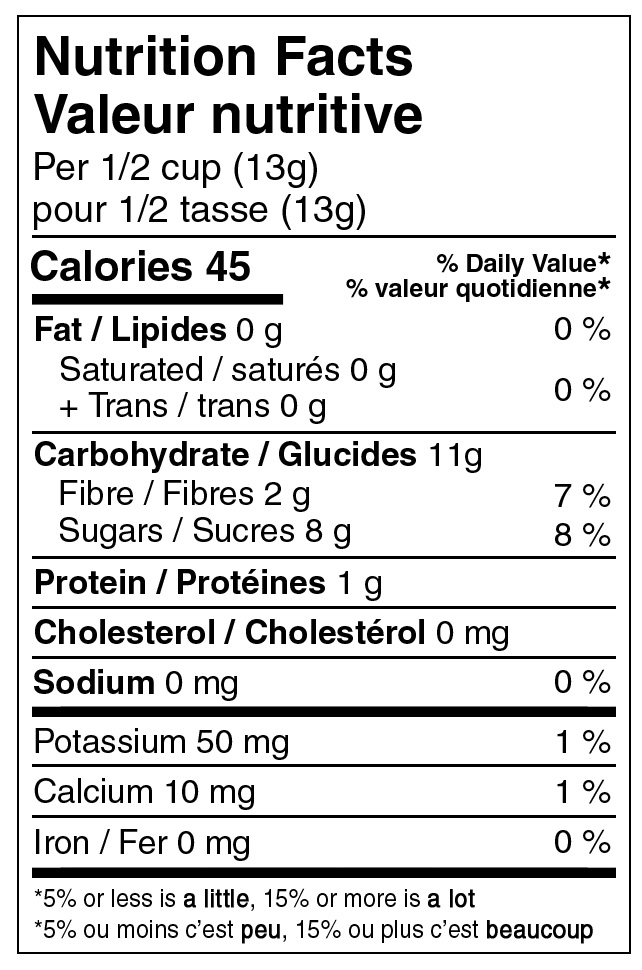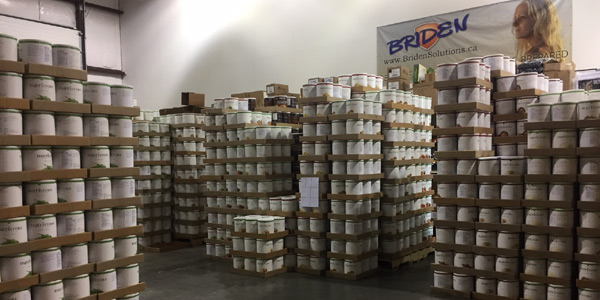#10 Cans: Understanding Size and Portions
If you’ve ever shopped for food in bulk, you’ve likely come across the #10 can. These large, cylindrical cans are used to store a wide variety of products, from fruits and vegetables to soups and sauces. But what exactly is a #10 can, and how can you understand its size and portions? In this article, we’ll explore everything you need to know about #10 cans.

#10 sized cans of freeze dried vegetables
What is a #10 Can?
A #10 can is a standard container used in the food service industry for packaging and storing a variety of food products. It is known for its distinctive size and shape—a cylindrical can that measures approximately 16 cm in diameter and 18 cm in height. The term “#10 can” refers to its volume rather than its physical dimensions. A #10 can hold up to 2.8 liters of food (weight can vary product pending).
History of #10 Cans
The use of standardized cans for food packaging dates back to the early 20th century when the canning industry began to flourish. The #10 can became a standard size due to its convenience and versatility. It is large enough to hold a significant quantity of food, making it suitable for home food storage, commercial kitchens and food service establishments.
Common Uses of #10 Cans
#10 cans are commonly used for bulk storage of various food products. Some of our most common items packed in #10 cans include:
- Fruits and Vegetables
- Grains – such as pastas, rice, oats, wheat, quinoa, and millet
- Baking Ingredients – such as flour and sugar
- Meat and Other Proteins – such as beef, chicken, pork, beans, eggs, cheese and powdered skim-milk
- Pre-made meals
Understanding Portions
One of the key advantages of using #10 cans in commercial kitchens is portion control. The size of a #10 can allows for easy measurement and distribution of food. Here’s how you can understand portions when using #10 cans in metric units:
- Volume: As mentioned earlier, a #10 can can hold up to 2.84 liters of food. This makes it easy to calculate and control portion sizes when preparing dishes. (see example below)
- Consistency: Using #10 cans ensures consistency in recipes. You can rely on the standardized size to maintain the quality and taste of their dishes.
- Cost-Effective: Buying food in bulk and portioning it out can be cost-effective.
Storing #10 Cans
Proper storage of #10 cans maintains the quality and safety of the food inside. Here are some tips for storing #10 cans:
- Cool, Dry Place: Store #10 cans in a cool, dry place away from direct sunlight and extreme temperatures (under the stairs for example). On average the ideal recommended temperature can range is between 13 & 21 degrees Celsius. We are often asked if cans be stored in the garage or outdoors. In Alberta our summers are hot and our winters are cold, so my unheated garage at my home is not a safe storage space.
- Rotation: Practice a “first in, first out” (FIFO) rotation system to ensure that older cans are used before newer ones. Every can has a date on it, so you can manage your rotation with ease.
- Labeling: Clearly label the contents and date of each #10 can to make your inventory management and tracking easier. Each can also shows portions per can (based on the calculated Canadian serving size). The label shows how many calories are in a serving size to help determine your own body’s personal serving size needs.
- Sealing: After opening a #10 can, you can transfer any unused contents to a food-safe container and seal it tightly to prevent spoilage, or seal with a provided lid. Most of our product is freeze dried which is the best way to get the longest shelf life. Our Nutristore freeze dried line of foods are all in the 20 – 30 year range sealed.
-
- Freeze dried strawberries for example have a sealed shelf life of 25 years. Once opened, the strawberries have a 6 – 12 month shelf life. So you have a full year to enjoy them.
-
Canadian Serving Sizes:
In Canada, serving sizes are regulated by Health Canada and the Canadian Food Inspection Agency (CFIA). These agencies provide guidelines to ensure that food products sold in Canada are labeled with accurate and consistent serving sizes.
Canadian serving sizes are typically expressed in metric measurements, such as grams or milliliters, to align with the metric system.
The goal is to help consumers make informed dietary choices and understand the nutritional content of products in a standardized way.
When using #10 cans or other packaging formats, Canadian food manufacturers adhere to these regulations to ensure that their products meet the nutritional needs and expectations of Canadian consumers. This commitment to clear and standardized serving sizes contributes to a healthier and more transparent food industry in Canada.
Take this #10 can of Nutristore Blueberries for example:

In the bottom corner of this photo, you will find it says this can contains 24 servings, and has a sealed 25 year shelf life.
Each single ingredient product (like Blueberries), have no added preservatives.
On our website there is a tab below to look at “Details,” “More Information,” and “Reviews”.
The More Information tab shows information (see table below) such as shelf life (sealed/opened), serving size, ingredients, allergens
The Details tab shows the Nutritional Facts table and any other pertinent instructions for the product
The Reviews tab shows other wonderful customers whom have tried these amazing products! We sure do love your feedback
| Free Shipping | Yes – When order subtotal is $199 or more |
|---|---|
| Shelf Life Sealed | Up to 25 years |
| Shelf Life Opened | Up to 3 – 6 months |
| Servings Per Container | 44 |
| Serving Size | 1/4 cup (6 g) |
| Net Weight | 9.3 oz (264 g) |
| Ingredients | Blueberries |
| Allergens | Please note: Processed in a plant that handles milk, wheat, soy, egg, peanut, and tree nut products |
| Ships Canada Wide | Yes |
| Weight notice | Our food items are filled by weight and not by volume. Some settling may occur during shipping and this is normal. We do our best to fill packages full, please understand that we have standard pack sizes, and a wide variety of items to fit. |

“Blueberries are rich in potassium, fiber, folate, vitamin C, vitamin B6 and phytonutrients. This makes them a great addition to your food storage. Toss them in a salad, muffins, smoothie or just eat them right out of the can for a crunchy sweet treat that’s good for you.
Rehydration Instructions:
Soak 1 cup of Nutristore™ Blueberries in 1/3 to 1/2 cups of water until tender (7-10 minutes). Drain off extra water.”
Super Important Note: In the above example, we used Blueberries that were packaged in the USA. Per Canadian standards, we have updated the product information for this product to metric from the US imperial system, and adjusted the amounts to adhere to Canadian food regulations. The photo above shows 24 servings based on what the US serving size states on the US product. In Canada, government food standards suggest this amount of Blueberries in this can is equivalent to 44 servings. The example above is a teaching example.



